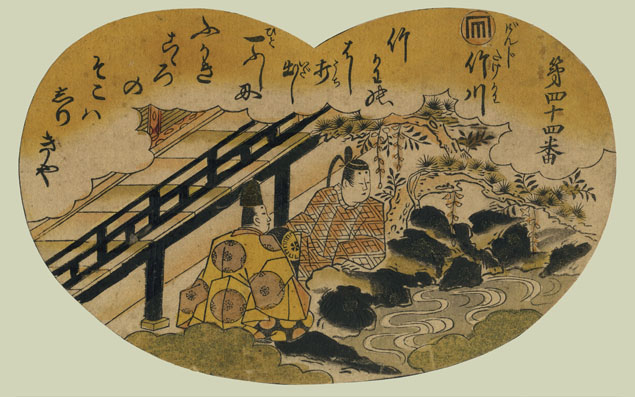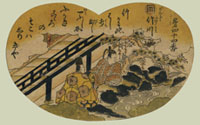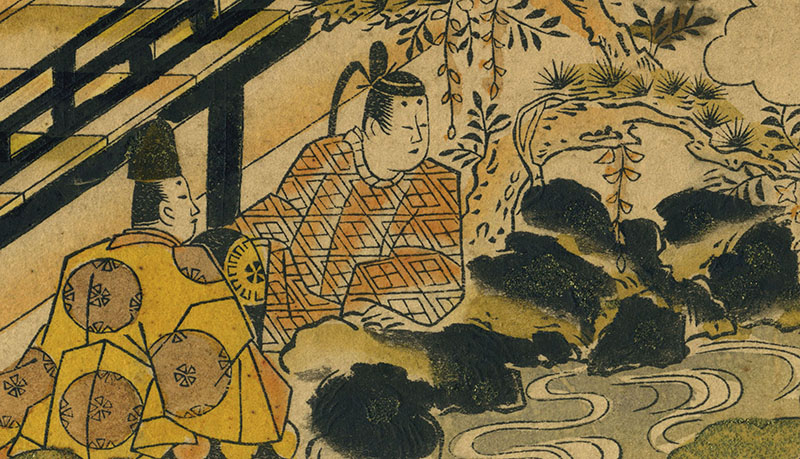(active c. 1720 - 1750)
THE TALE OF GENJI: BAMBOO RIVER (Genji Monogatari chapter 44, Takekawa) c. 1730-1735
Woodblock print (beni-e) with hand-applied and stenciled colour and metallic powder; some urushi (shining glue). The print belongs to a series, of the greatest rarity, which presumably contained fifty-four designs, one for each chapter of the Tale of Genji. According to Waterhouse this series has been designed by Shigenaga (the first twenty-six chapters) and Kiyomasu II (the remaining twenty-eight). See D. Waterhouse, Images of Eighteenth-Century Japan, Ukiyoe prints from the Sir Edmund Walker Collection, exh. cat., Royal Ontario Museum, Toronto 1975; cat. nos. 40, 41, 42, pp. 81-87. The series was in horizontal hosoban format, each print including the subject in a fan-shaped frame at the center. This type of heart-shaped or fan-shaped print is known as haribako-e, literally, pictures to decorate boxes. It was very popular in the Kyöhö era (1716-1736). People cut haribako-e out and pasted them on boxes for small objects, onto sliding doors and folding screens. For this reason often we find this very rare kind of primitive prints trimmed.
You find here an interesting catalogue on line of haribako-e.
The impression of the key block is fine and sharp, the colouring and the metallic powder are very well preserved. Apart the trimming, the sheet is in very good condition. 132 x 221 mm.
Torii Kiyomasu II was a painter and print designer of the Torii school, a specialist, like the rest of the Torii artists, in billboards and other images for the promotion of the kabuki theaters. Scholars are unsure as to Kiyomasu II's relation to the original Kiyomasu who came a few decades earlier; they may have been close relations, or master and student, or they may have been the same man. His prints, like many at the time, were made largely using the urushi-e (lacquer print) and benizuri-e (rose print) methods; the lines or outlines of the prints themselves would often be in monochrome or a limited number of colors and the rest would be done by hand.


